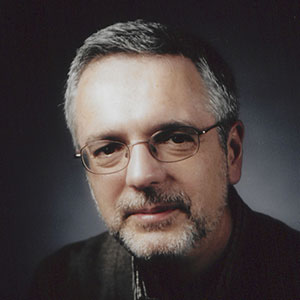Rafael Daniel Camerini-Otero, M.D., Ph.D.

- Chief: Genetics & Biochemistry Branch
- Section Chief: Genetics and Biochemistry Section, Genetics & Biochemistry Branch
Professional Experience
- Member of the National Academy of Sciences, 2025
- Fellow of the American Association for the Advancement of Science, 2012
- Solomon A. Berson (NYU) Medical Alumni Achievement Award in Basic Science, 2001
- Gerald D. Aurbach Lecture Award of the Endocrine Society, 1993
- Founding Fellow of the American College of Medical Genetics, 1993
- American Society for Clinical Investigation, 1983
- Research Associate, Laboratory of Molecular Biology, NIAMDD, NIH, 1974-1977
- Fellow in Medical Genetics, Johns Hopkins University and Hospital, 1977-1978
- Pediatrics Residency, New York University & Bellevue Hospital, 1973-1974
- M.D., Ph.D., New York University, 1973
- B.S., Massachusetts Institute of Technology, 1966
Research Goal
The ultimate goal of our research is to improve the health of individuals with inherited and congenital conditions and diseases.
Current Research
My laboratory is interested in the biochemistry and molecular biology of homologous recombination in prokaryotes and eukaryotes. The focus had been on the first homology-dependent step in homologous recombination, the homologous pairing of DNAs. We have been studying the underlying biochemical mechanism to understand the biology of genetic recombination and to devise new strategies to manipulate complex genomes in vitro and, in the future, in vivo, and the DNA-protein complexes involved. In addition, we have been studying the biochemistry and molecular biology of mouse meiosis and evolutionary genomics. Most recently, we have been investigating novel approaches to map recombination hotspots in a variety of mammals including humans.
Select Publications
- Genetic recombination is directed away from functional genomic elements in mice.
- Brick K, Smagulova F, Khil P, Camerini-Otero RD, Petukhova GV.
- Nature (2012 May 13) 485:642-5. Abstract/Full Text
- DNA recombination. Recombination initiation maps of individual human genomes.
- Pratto F, Brick K, Khil P, Smagulova F, Petukhova GV, Camerini-Otero RD.
- Science (2014 Nov 14) 346:1256442. Abstract/Full Text
Research in Plain Language
My laboratory is interested in the processes that help a cell repair a damaged section on one of two identical strands of DNA. This process, called homologous recombination, involves first identifying and then copying the missing section on the damaged strand’s undamaged twin. The focus of much of my lab’s research has been on the many biological mechanisms involved in locating identical DNA strands, called homologous pairs, and building and inserting the accurate replacement strand.
Our research into this complex process makes it possible to better understand the basic biology of DNA sequences as well as the steps involved in homologous recombination and other genetic processes. This information will allow researchers to develop and test new approaches to gene therapy as a way to treat disease.
In addition, our studies on how chromosomes come together in generating sperm and oocytes will help us understand how chromosome abnormalities, such as those responsible for Down syndrome, come about and what might be possible to prevent them.
